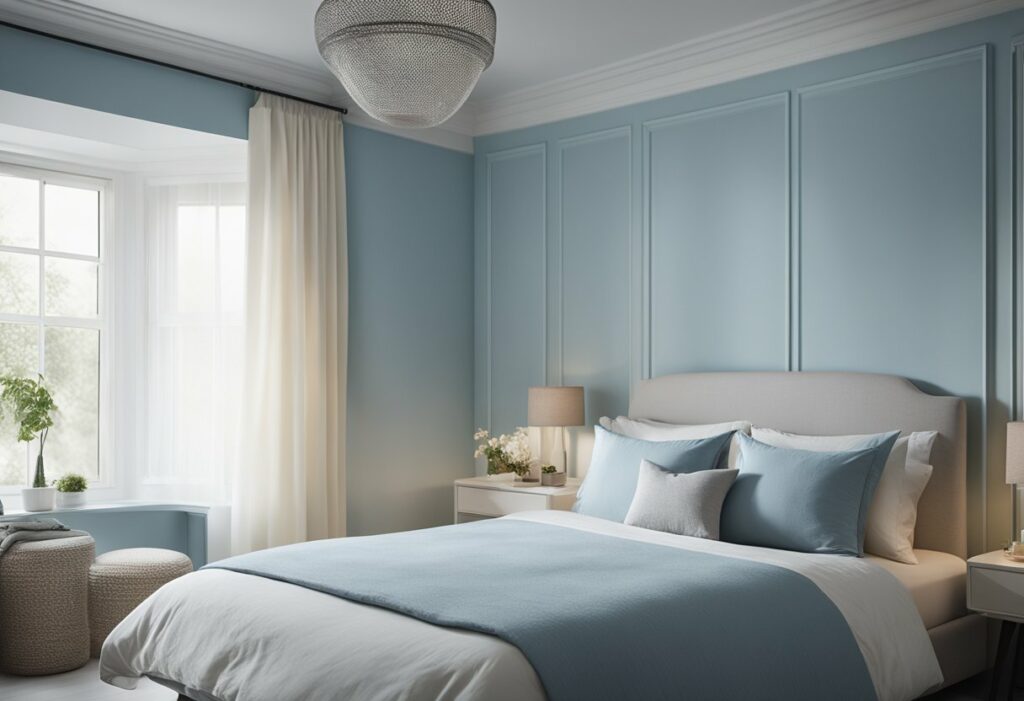Bedroom Interior Colour Design: Create a Stunning and Inviting Space
Are you looking to transform your bedroom into a peaceful oasis? One of the most important elements of bedroom design is the colour scheme. Your bedroom is your personal sanctuary, and the colours you choose can have a significant impact on your mood and overall well-being. In this article, we’ll explore the essentials of bedroom colour theory and how to create your own personal bedroom colour oasis.
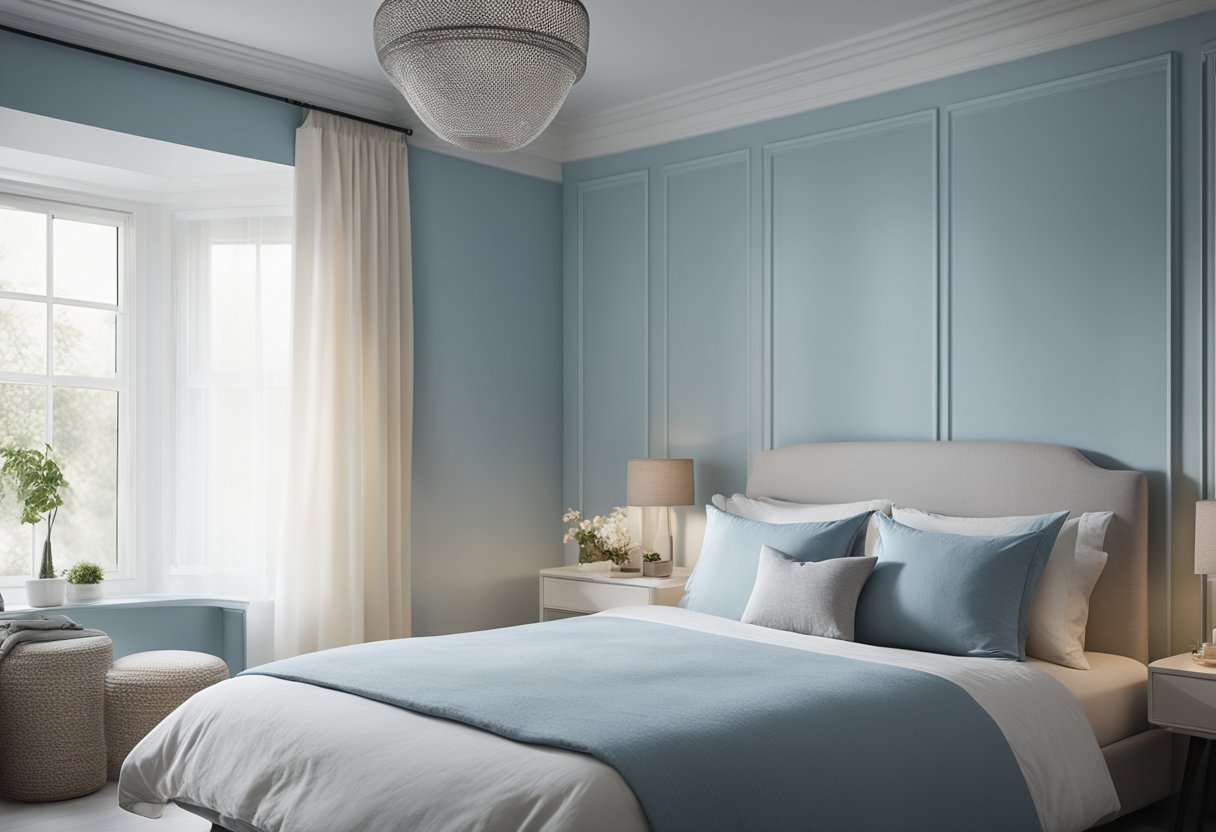
Colour theory is the science behind how colours affect our emotions and behaviours. When it comes to bedroom design, it’s important to choose colours that promote relaxation and calmness. Soft, muted colours like pastels, earth tones, and neutrals are ideal for creating a peaceful atmosphere. However, if you prefer bolder colours, you can still incorporate them into your bedroom design in a way that promotes relaxation.
Creating your personal bedroom colour oasis involves choosing colours that reflect your personal style and promote the atmosphere you want to create. You can start by choosing a colour scheme that resonates with you and building your design around it. From there, you can add accent colours, patterns, and textures to create a space that feels uniquely yours. With the right colour scheme, you can transform your bedroom into a calming retreat that helps you unwind and recharge.
Key Takeaways
- Colour theory is the science behind how colours affect our emotions and behaviours
- Soft, muted colours like pastels, earth tones, and neutrals are ideal for creating a peaceful atmosphere
- Creating your personal bedroom colour oasis involves choosing colours that reflect your personal style and promote the atmosphere you want to create
Essentials of Bedroom Colour Theory
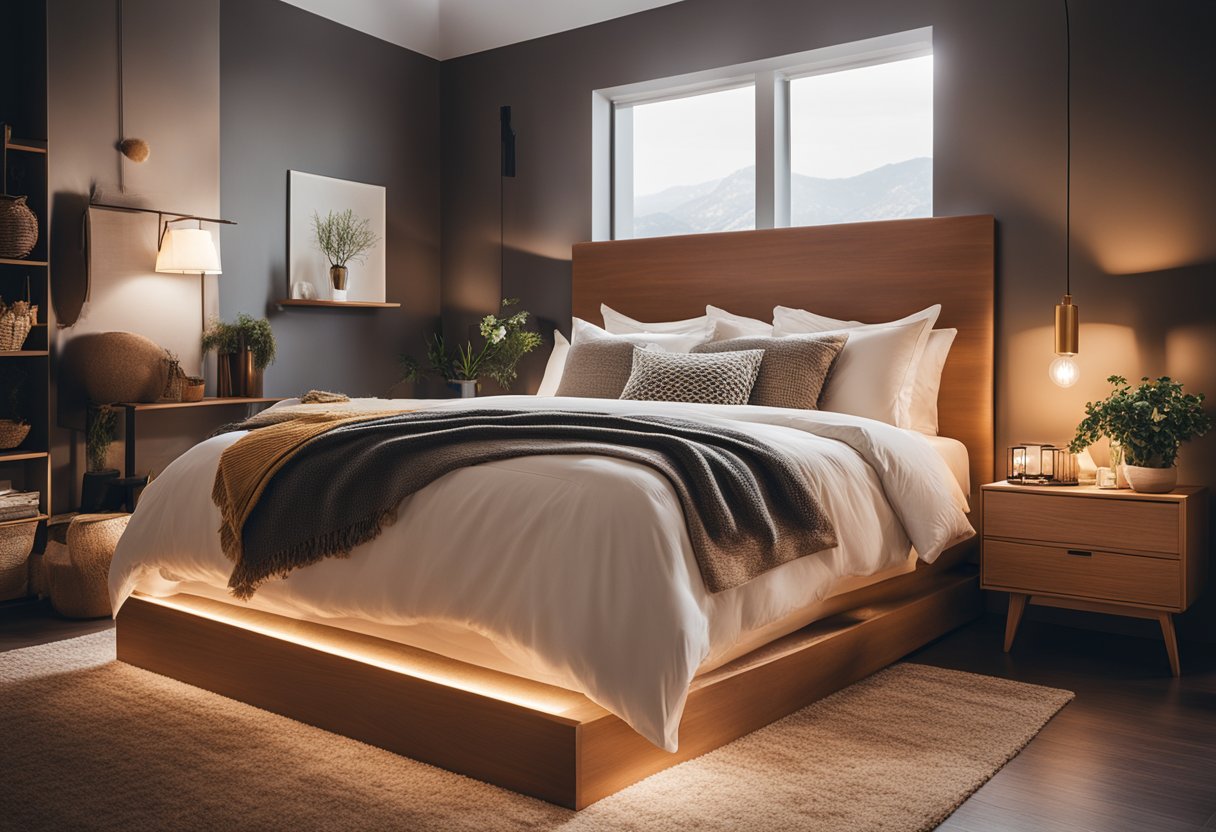
When designing your bedroom, one of the most important things to consider is the colour scheme. The right colour combination can make your bedroom feel warm, inviting, and relaxing, while the wrong one can make it feel cold, sterile, and uninviting. In this section, we will explore the essentials of bedroom colour theory, including the colour wheel, the psychology of colours in bedroom design, and lighting and colour perception.
Understanding the Colour Wheel
The colour wheel is an essential tool for understanding how colours work together. It is made up of primary colours, secondary colours, and tertiary colours. Primary colours are red, blue, and yellow, and they cannot be made by mixing other colours. Secondary colours are made by mixing two primary colours, and they include green, orange, and purple. Tertiary colours are made by mixing a primary and a secondary colour, and they include colours like red-orange, blue-green, and yellow-green.
Psychology of Colours in Bedroom Design
Colours have a significant impact on our mood and emotions. When it comes to bedroom design, it is essential to choose colours that promote relaxation, calmness, and tranquillity. Soft, muted colours like soft gray, pale blue, and sage green can create a calming and serene atmosphere, while bright colours like yellow and pink can create a cheery and happy mood. Natural light is also an important factor to consider when choosing colours for your bedroom. Bright colours can be overwhelming in rooms with lots of natural light, while soft, muted colours can create a relaxing and tranquil atmosphere.
Lighting and Colour Perception
The way we perceive colours can be affected by lighting. Natural light can make colours appear brighter and more vibrant, while artificial light can make them appear dull and muted. When choosing colours for your bedroom, it is essential to consider the type of lighting you will be using. If you have lots of natural light in your bedroom, you may want to choose colours that are more muted to avoid overwhelming the space. If you have limited natural light, you may want to choose brighter colours to add warmth and depth to the room.
In summary, understanding the essentials of bedroom colour theory is crucial for creating a space that is calming, serene, and relaxing. By using the colour wheel, considering the psychology of colours in bedroom design, and thinking about lighting and colour perception, you can create a bedroom that is both beautiful and functional.
Creating Your Personal Bedroom Colour Oasis
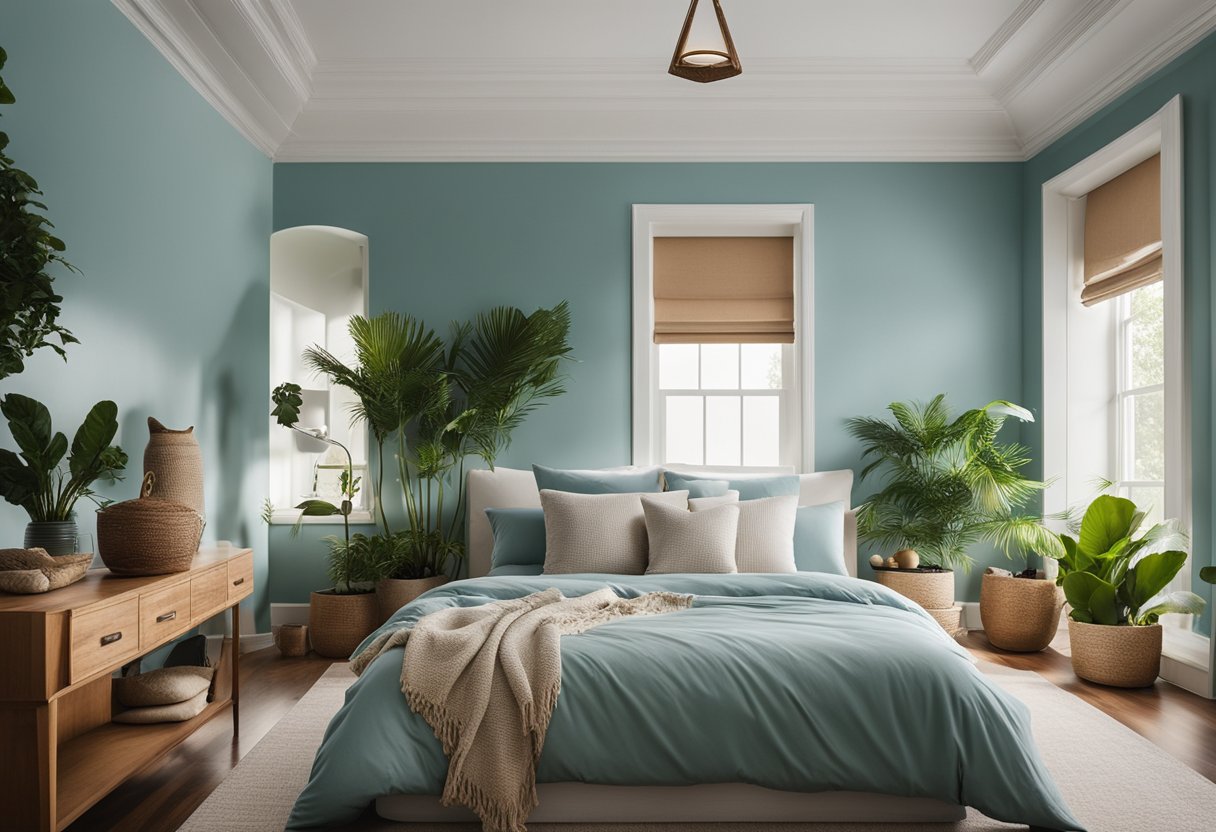
Your bedroom is your personal oasis, and the colours you choose can have a significant impact on the overall atmosphere. Creating a bedroom colour scheme that reflects your personal style and promotes relaxation is key to achieving the perfect bedroom oasis.
Selecting a Dominant Colour Palette
When selecting a dominant colour palette for your bedroom, consider the overall style you want to achieve. A classic, contemporary, or modern look can be achieved by using a neutral colour palette. A chic and timeless look can be achieved by incorporating warm or cool tones. A welcoming and cozy look can be achieved by using muted colours, while a bold and vibrant look can be achieved by adding a pop of colour.
A neutral bedroom with a neutral palette can create a calm and serene atmosphere. Consider using shades of white, beige, or grey for your walls and bedding. Add texture to the room with natural wood furniture, velvet or linen bedding, and a soft rug.
Incorporating Textiles and Accessories
Textiles and accessories can add depth and dimension to your bedroom colour scheme. Consider using wallpaper with a subtle pattern, or a bold wallpaper as an accent wall. Add a pop of colour with a vibrant throw pillow or a colourful piece of artwork.
Bedding is an essential element in creating a comfortable and inviting bedroom. Consider using bedding in complementary colours to your dominant colour palette. For example, if you have a neutral colour palette, add a pop of colour with a bold throw pillow or a patterned duvet cover.
Accentuating with Secondary and Accent Colours
Secondary and accent colours can add interest and depth to your bedroom colour scheme. Consider using complementary colours to your dominant colour palette. For example, if your dominant colour palette is blue, consider using shades of green as a secondary colour. Add accent colours with throw pillows, artwork, or a colourful rug.
In conclusion, creating your personal bedroom colour oasis is all about selecting a dominant colour palette, incorporating textiles and accessories, and accentuating with secondary and accent colours. With these tips in mind, you can create a bedroom that is both inviting and reflective of your personal style.
Frequently Asked Questions
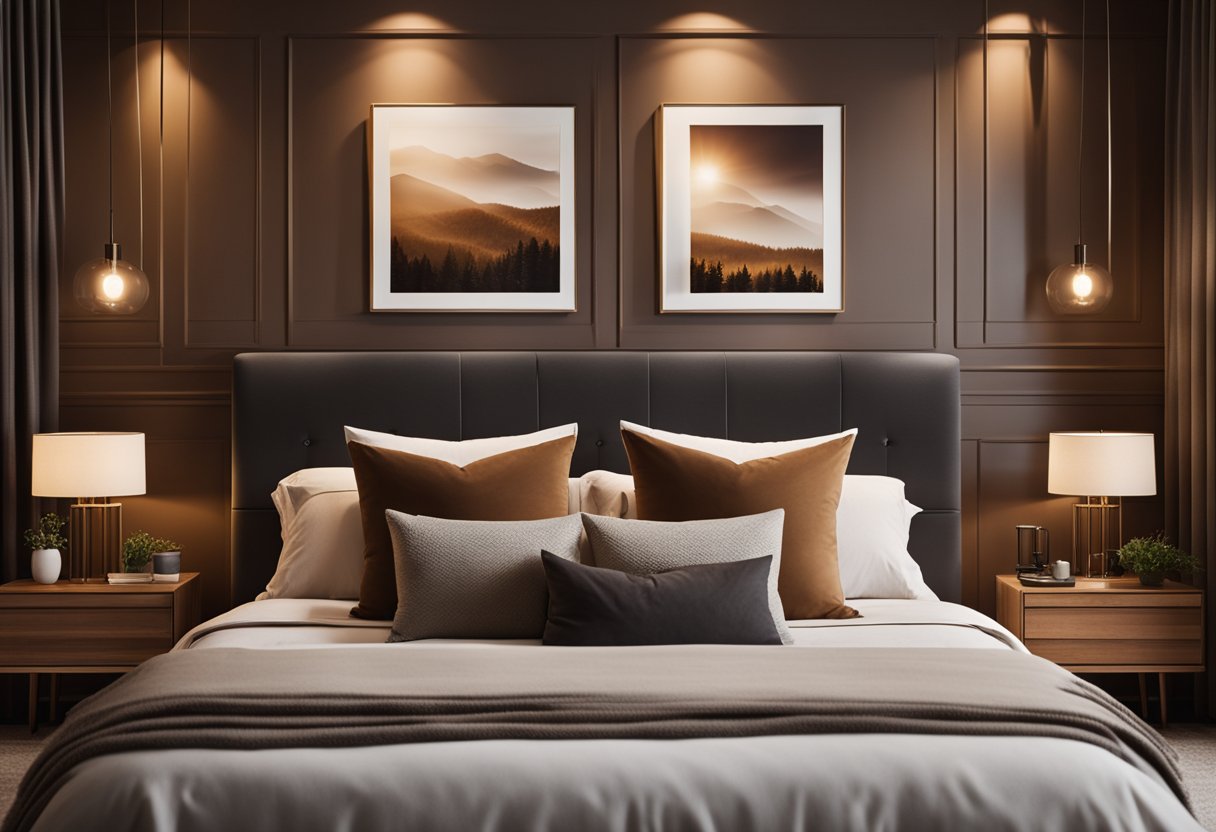
What are the top trending colour combinations for sprucing up your bedroom walls?
If you’re looking to give your bedroom a fresh new look, consider some of the top trending colour combinations for bedroom walls. Some popular options include:
- Calming blues and greens that promote relaxation and tranquillity
- Bold jewel tones like emerald and sapphire for a touch of luxury and glamour
- Soft pastels like blush pink and lavender for a romantic and dreamy atmosphere
- Monochromatic shades of grey, beige, or white for a sophisticated and timeless look
How can you maximise style in a small bedroom with colour design?
Small bedrooms can be challenging to decorate, but there are ways to maximise style with colour design. One option is to use light and bright colours to create the illusion of more space. Another option is to incorporate multi-functional furniture pieces that can serve as both storage and decor. Consider adding a pop of colour with a statement piece like a colourful rug or piece of artwork.
What are the most popular modern colour schemes for a chic bedroom makeover?
If you’re looking for a modern and chic bedroom makeover, consider some of the most popular colour schemes. Some trendy options include:
- Black and white with metallic accents for a sleek and sophisticated look
- Navy and blush pink for a modern twist on a classic colour combination
- Grey and mustard yellow for a bold and contemporary look
- Dark green and brass for a moody and luxurious atmosphere
Which hues are scientifically proven to be the most soothing for a restful bedroom atmosphere?
If you’re looking to create a restful and soothing atmosphere in your bedroom, consider some of the hues that are scientifically proven to promote relaxation. Some of the most soothing colours for a restful bedroom atmosphere include:
- Shades of blue, which can lower blood pressure and heart rate
- Soft greens, which can reduce anxiety and promote a sense of calm
- Pale pinks and lavenders, which can create a peaceful and serene atmosphere
What are the ideal colour choices for a couple’s bedroom retreat?
When it comes to creating a couple’s bedroom retreat, it’s important to choose colours that both partners will love. Some popular options include:
- Neutrals like beige, grey, and white, which create a calm and peaceful atmosphere
- Deep jewel tones like ruby red and emerald green for a touch of luxury and passion
- Soft pastels like blush pink and baby blue for a romantic and dreamy atmosphere
How does Feng Shui influence the selection of colours for a harmonious bedroom environment?
Feng Shui is an ancient Chinese practice that seeks to create harmony and balance in the home. When it comes to selecting colours for a harmonious bedroom environment, Feng Shui principles suggest choosing colours that promote relaxation and tranquillity. Some popular Feng Shui colours for the bedroom include:
- Soft blues and greens for a calming and soothing atmosphere
- Warm earthy tones like beige and brown for a sense of stability and grounding
- Pale pinks and lavenders for a peaceful and serene atmosphere.

